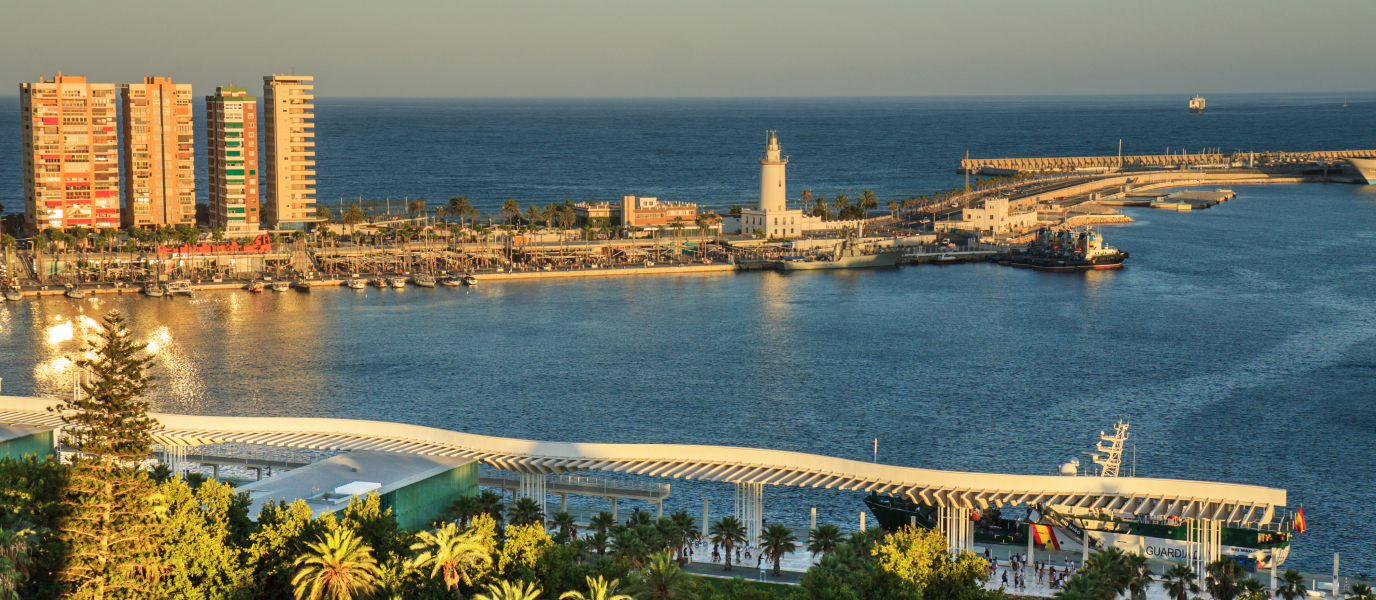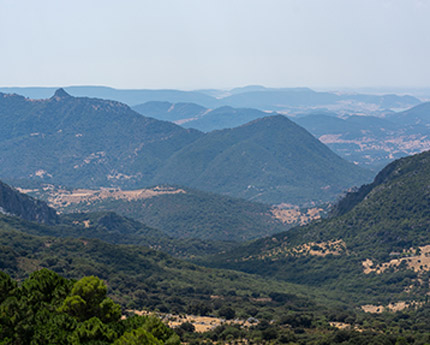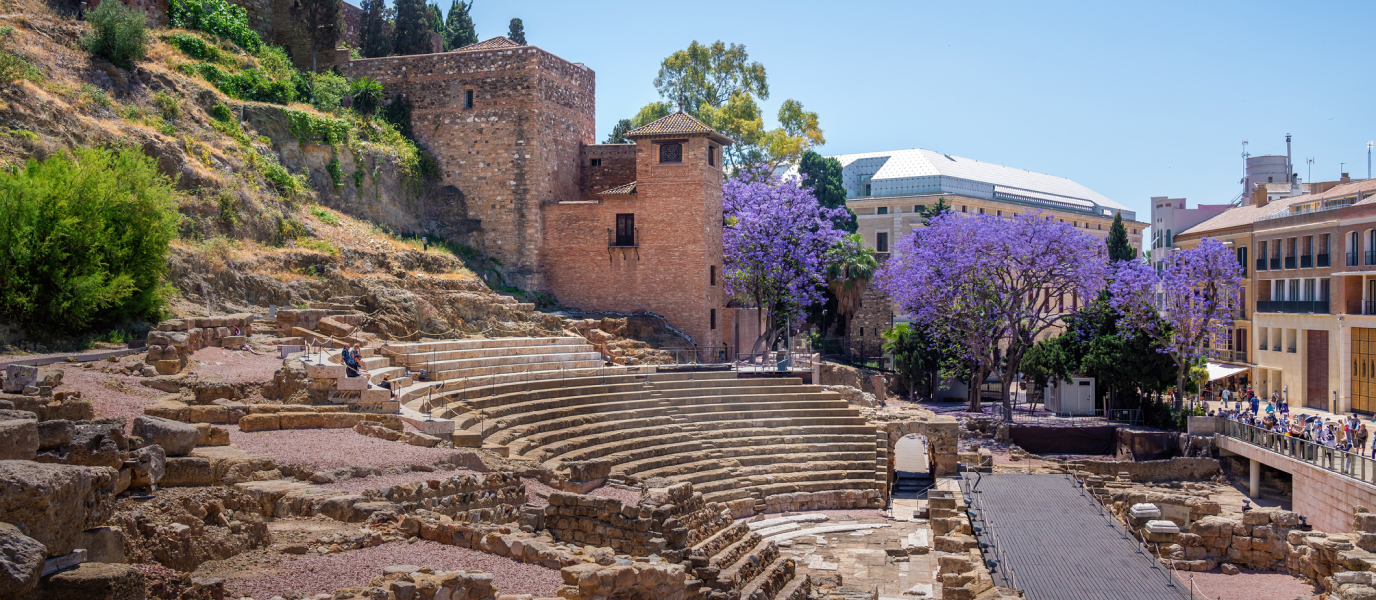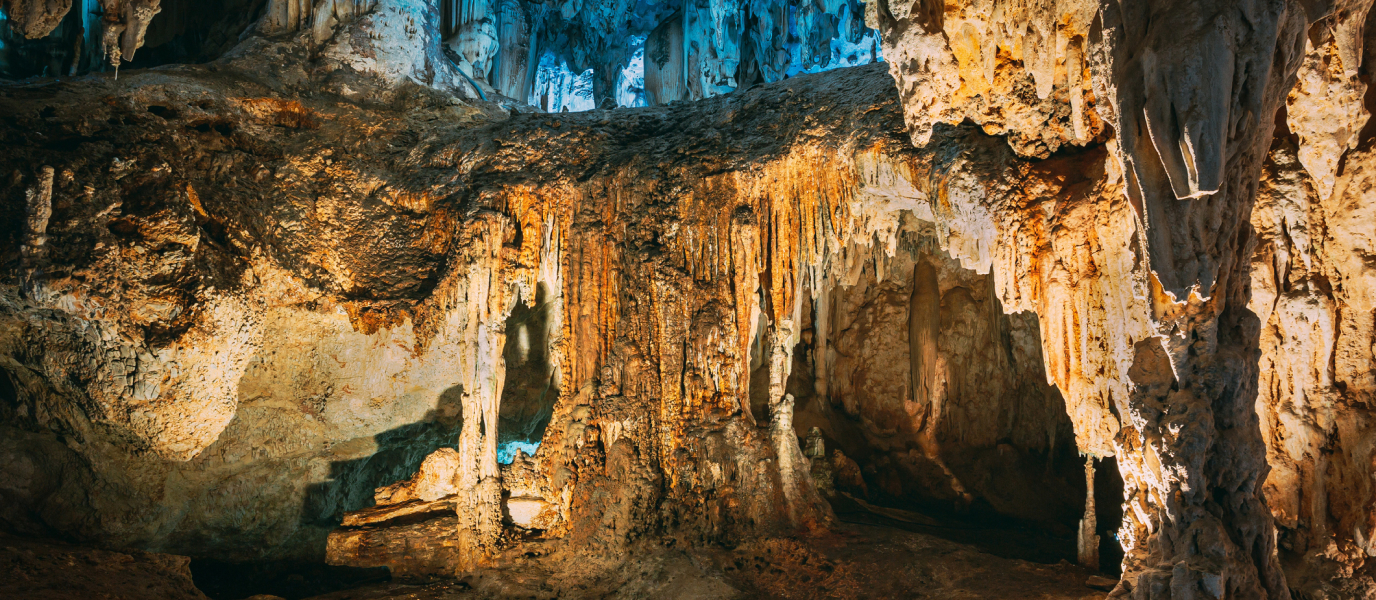Málaga’s Seaside Promenade, also known as Paseo Marítimo Antonio Banderas, offers walkers an approximately 2.5-km route along which they can enjoy the beauty of its surroundings. Its wide sidewalk, the life that it exudes all day and night, the sea breeze and the pleasant views of the Mediterranean make it one of the most popular corners chosen by locals. If you visit the city, don’t miss it.
The Antonio Banderas Seaside Promenade limits
If we look towards the sea, the promenade covers the whole of Playa de la Misericordia beach; to the east, it becomes the Antonio Machado Seaside Promenade, and to the west, it is bordered by a large breakwater—known as El Espigón de la Térmica—that was used to cool the old thermal power station with salt water. This place, which has been abandoned for many years and is now being studied for a reconditioning project, is a favourite spot for locals who come to behold the sunset.
Playa de la Misericordia Beach
Playa de la Misericordia is 30 metres wide and located in the most industrial part of the city. This former industrial area on the outskirts, filled with factories and chimneys, is today one of the most popular beaches in Málaga.
It is two kilometres long and it owes its name to a former hospice dedicated to charity, the Casa de la Misericordia, which was operating until 1978. Since 2012, it has been the most dynamic cultural space in the city and is now known as La Térmica, in honour of the industrial neighbourhood in which it is located. Tourists interested in contemporary art visiting the Málaga’s seaside promenade shouldn’t miss this characteristic building, an emerging art laboratory in the city.
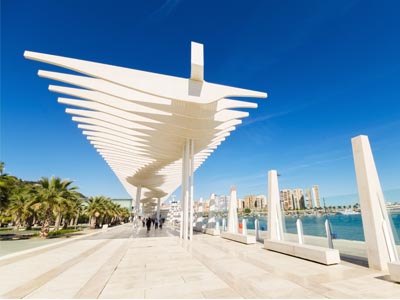
However, if you would prefer to take a dip in a beach with a Q for Quality Tourism award, Playa de la Misericordia is perfect for you. When leaving, right next to the beach, you will find all the services you need to continue enjoying a perfect day: showers, toilets, activities, games and parks for children.
And when it’s time to regain strength, as almost anywhere along the Mediterranean coast, infinite beach bars and restaurants on Playa de la Misericordia start up the kitchen and offer you Málaga tapas such as pescaíto (fried fish), espetos (grilled sardines), gazpachuelo (fish soup), bienmesabe (marinated dogfish), and other popular dishes.
‘El Melillero’ rising tide
If this is your first time visiting Málaga and certain beaches including Playa de la Misericordia, you should know that you need to move inland pretty quickly at about 7:30 PM. This is because of what is known as ‘El Melillero’: a sudden rise in sea level, followed by three or four waves of considerable size. The phenomenon can catch you off guard, so make sure you grab your umbrella and towel from the beachfront before it arrives.
However, it is not a natural phenomenon, but rather a consequence of the human impact on the environment: the sudden rise in tide is caused by the high-speed ferry boat that connects Málaga with Melilla, ‘El Melillero’, coming into the Port of Málaga. But if you do get caught in it, it’s probably best that you just laugh, you’re probably being recorded!
The chimneys along Málaga’s Seaside Promenade
The promenade skyline is not only palm trees and buildings, there are also chimneys along the way. Playa de la Misericordia was where Málaga’s industrial muscle was located, with its factories, ovens, chimneys and smoke being puffed out into the skies. In the nineteenth century, Málaga was the second most industrial city in Spain after Barcelona, and the Antonio Banderas Seaside Promenade still bears witness to the vestiges of this industrial past.
· ‘La Térmica’ Chimney
We begin our tour of the Antonio Banderas Seaside Promenade chimneys at its westernmost side, the San Patricio Thermoelectric Power Station, better known as ‘La Térmica’. It belonged to the thermal and electrical power station of Málaga, and was built in 1957 next to the beach, close to water that could be used to cool it. In return, the hot water outlet was used by the locals to swim in any season.
· ‘Los Guindos’ Chimney
If we continue our walk, we soon come across another industrial vestige. By looking up, we can see the Lead Smelter chimney, better known as ‘Los Guindos’ or ‘Torre Mónica’. Its history is even more interesting. Belonging to the factory, it was located at a very high altitude to better disperse the gases emitted by the lead smelter. It was built in 1923 and was the highest chimney in Spain, at 106 metres. It now measures a little less as it had to be restored due to a risk of collapse, but it still holds the title of one of the highest.
· Calle Pacífico Chimney
We finish the tour at the last—and the oldest—chimney along Málaga’s Seaside Promenade, dating from 1890. This chimney has seen the most activity. Its story starts in ‘La Trinidad’, a factory that produced artificial fertilisers for agriculture. Later, it became part of the Spanish Union of Explosives, and finally ended up serving as a chimney for the sulphuric acid factory of La Cross until the 1990s, when it was retired from industrial activity.
Festivals on the Antonio Banderas Seaside Promenade in Málaga
As in all cities throughout Spain, in Málaga each neighbourhood has its own festival. Each location celebrates on a different date, and it’s not uncommon to see the people of Málaga enjoying the festivities. Playa de la Misericordia plays host to the following festivals:
· Saint John’s Eve
On the night of 23 June, Playa de la Misericordia is painted the colours of fire. Hundreds of locals come to enjoy the fireworks show, sing, dance or have a swim. What’s more, at midnight, juá—an 8-metre-high doll made from a variety of materials—is burnt. With great symbolic power, every year juá faces a problem that affects humanity and which people would like to eradicate with fire: drug trafficking, human trafficking, climate change, the economic crisis, etc.
· Las Moragas
On the coast of Málaga, it is quite common to find moragas, or parties on the beach under the moonlight. These events used to take place when fishermen would collect their nets, as a good day’s catch was cause for celebration. Nowadays, the tradition of these festivities is maintained: sardines are roasted, barbecues are lit, music is played and the dancing goes on all night. However, organising a moraga on Playa de la Misericordia is not that easy and a permit must be requested from the City Council beforehand.
· Summer cinema
In a city where the National Film Festival is held, the characteristic summer cinemas are a must. Every year, from the end of June to the middle of August, film premieres are projected across the length and breadth of the city. Playa de la Misericordia is one of the stages chosen by the locals to watch films under the stars.




































































